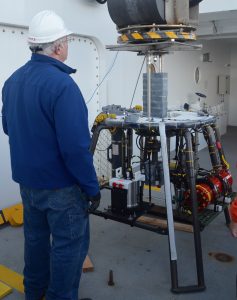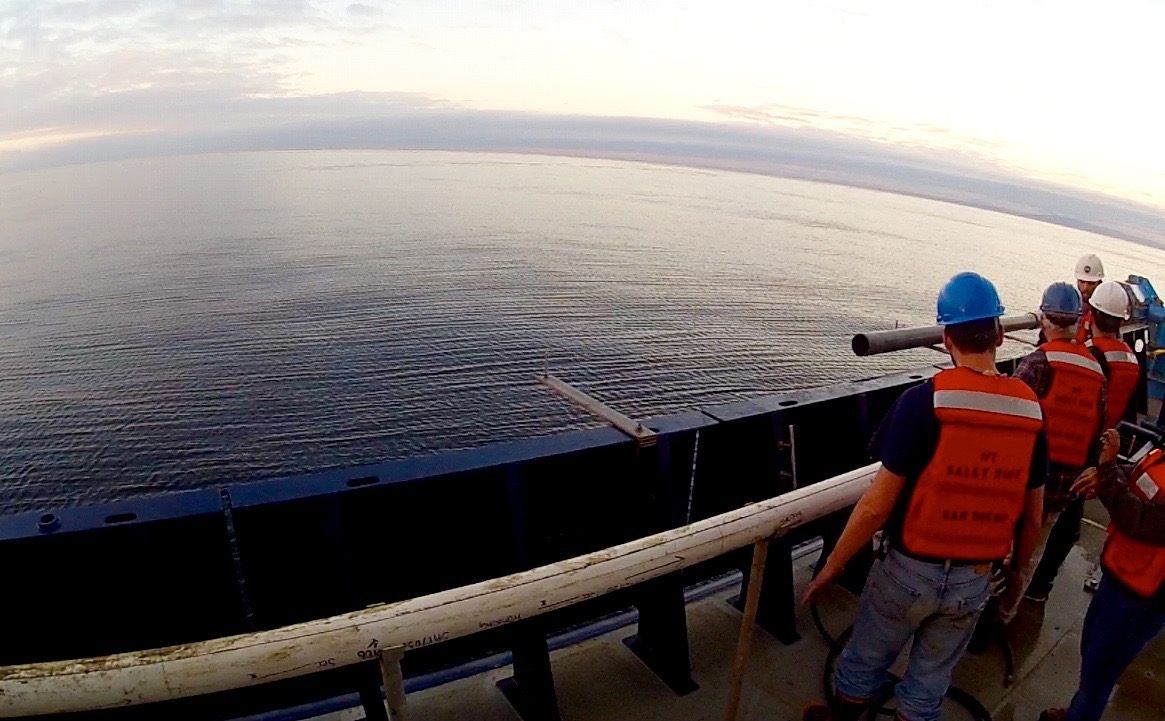
Restech Lee directs crane ops as the gravity
corer is shifted to the stern.
The current science verification cruise aboard R/V Sally Ride will test the ship’s ability to support coring operations. Seafloor sediment cores reveal information about the history and behavior of off-shore fault systems. They also provide insights into what the climate was like thousands of years ago. Scientists from multiple institutions are working together to collect and process cores, including students from Dr. Neal Driscoll’s lab at SIO who study geology and seismology all around Southern California. The Chief Scientist is Dr. Mitch Lyle from Oregon State University, and there’s also students and technicians from Sacramento State, University of Rhode Island, CSU Bakersfield, Woods Hole Oceanographic Institution, and the United States Geological Survey (USGS), all interested in sediment cores for various research projects.
There are multiple ways to collect sediment cores, each with their own purpose. A gravity core involves a metal cylinder 6 meters long that is lowered and sinks into the seafloor under its own weight. A piston core uses the same cylinder, but a more involved process including weights, levers, and a trigger. The core hits the bottom at a higher speed, and a piston in the cylinder reduces friction, allowing for deeper penetration into the sediment.

WHOI technician Marshall prepares the multi-corer
for deployment using the CTD handling system
on the starboard deck.
A multi-corer is a pyramid-shaped device that takes either 4 or 8 core samples at once. It is designed to capture high-quality samples from the upper layer of the seafloor, thus it is lowered gently and samples the water-sediment interface. Other items can be attached to the frame – in this case there’s a niskin bottle, like that on a CTD, to collect a 10 liter water sample near the seafloor. WHOI also has a camera system attached that takes high resolution pictures, and even sends low res versions up the cable to the lab so the location can be optimized based on what type of samples a group is looking for.
The main purpose of the cruise is to fully test the ship’s abilities, with scientific samples collected along the way. Previously sampled sites were chosen where sediment was soft, which improves the odds of successful equipment recovery. Samples are then processed by the multiple groups onboard, each with a different focus.
Follow along for more posts about how R/V Sally Ride handles coring operations, including set up, deployments, and processing of the core samples.

